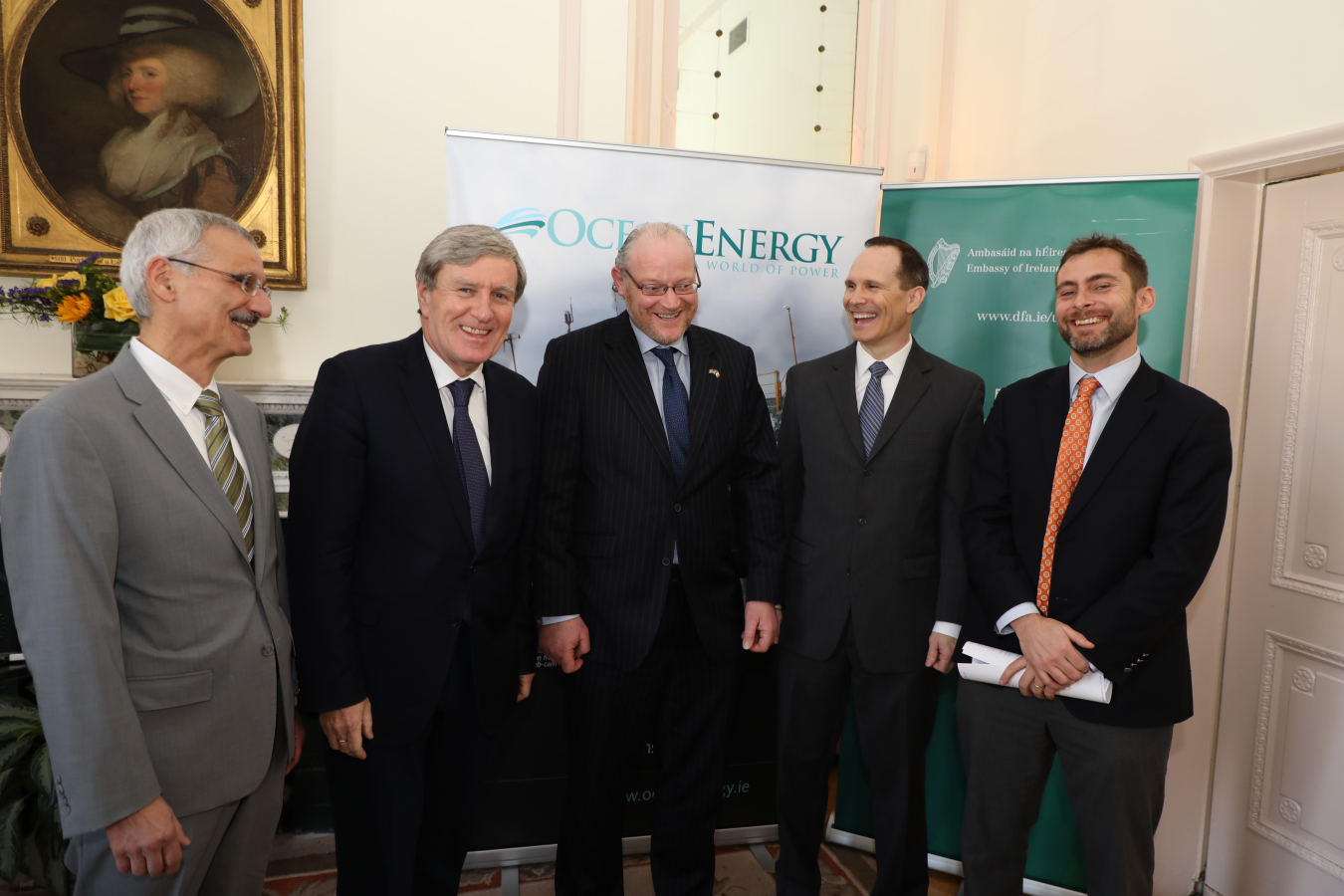A U.S. subsidiary of Irish-based Ocean Energy Ltd. signed an agreement to design and construct the hull of the company's wave energy converter buoy.
Water Power Technologies Office
March 5, 2018
Philip Vitale (Naval Facilities Engineering Command), Daniel Mulhall (Ambassador of Ireland to the United States), John McCarthy (Ocean Energy), Corey Yraguen (Vigor), Alejandro Moreno (DOE)
January 31, 2018, marked an important step for marine and hydrokinetic (MHK) technology research and development (R&D). A U.S. subsidiary of Irish-based Ocean Energy Ltd., together with Vigor, a shipbuilding and manufacturing company based in Portland, Oregon, signed a $6.5 million agreement to design and construct the 35-meter hull of Ocean Energy’s wave energy converter buoy at Vigor’s fabrication facility.
The agreement between Ocean Energy and Vigor not only sets the construction and testing timeline in motion for the new wave energy device, but also demonstrates the value of ocean energy to marine manufacturing and coastal economies. Ireland’s Sustainable Energy Authority and the U.S. Department of Energy’s Water Power Technologies Office (WPTO) are both providing research funding that will support the in-water testing of the new OceanEnergy Buoy being manufactured by Vigor. Ocean Energy received WPTO funding in 2013 to research alternative manufacturing methods for its OceanEnergy Buoy hull.
The OceanEnergy Buoy is a wave energy converter comprising new reinforced composites, aluminum, and stainless steel to negate corrosion and survive in uncompromising ocean environments. Ocean Energy’s technology has been subjected to over 10 years of R&D coupled with several rounds of scaled testing at the Galway Bay Ireland Test Site. The device being manufactured in Oregon will also have a much larger 500-kilowatt HydroAir turbine designed by U.S. manufacturing company, Dresser Rand. A critical component of the OceanEnergy Buoy, the Dresser Rand turbine has its own controls system and has already been successfully tested at sea in Galway Bay, Ireland.
Planned testing operations for both devices include a full year of deployment at the U.S. Navy’s Wave Energy Test Site (WETS) in Hawaii. Beginning in August of 2018, both turbine and buoy performance will be measured on a grid-connected scale never before seen in the United States. Ocean Energy then intends to redeploy their device with a 1-megawatt turbine design at the European Marine Energy Centre in 2020.
Staff from WPTO met with representatives from Ocean Energy, Vigor, and Dresser Rand at the Irish Embassy in Washington, D.C., on the day of the partnership announcement. Daniel Mulhall, current Ambassador of Ireland to the U.S., was also present to deliver the keynote speech, and spoke of the similarities in both resource and economic potential from marine energy between Ireland and the United States. Additional discussions and presentations focused on the benefits and importance of long-term U.S. and Irish leadership in marine energy, as well as on construction and testing details of Ocean Energy’s device and where it may be deployed in the future.

